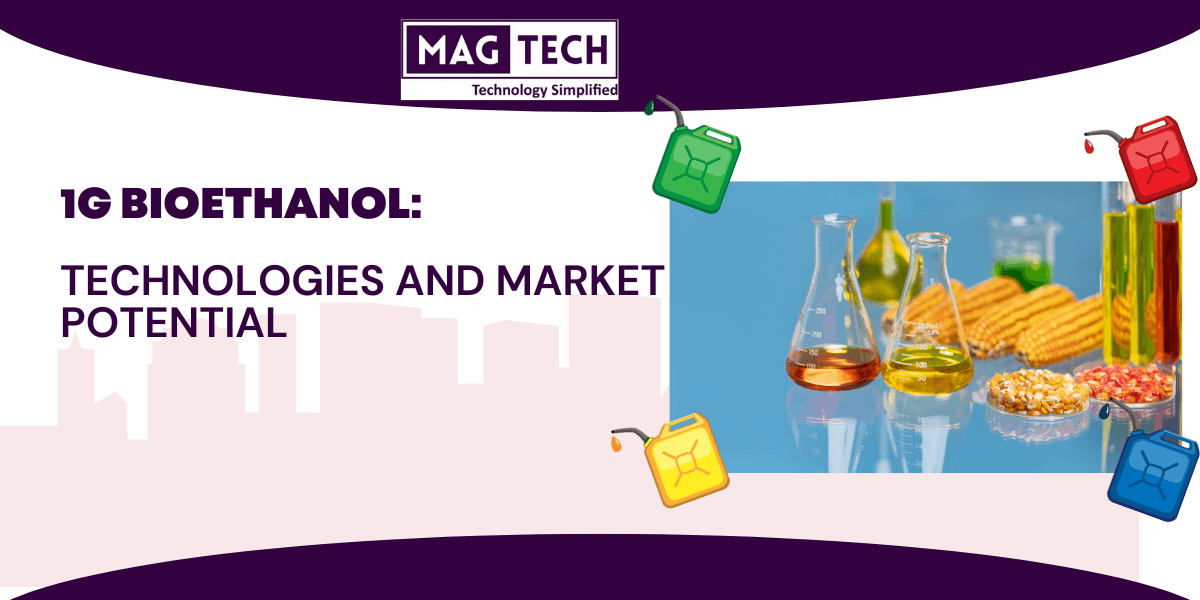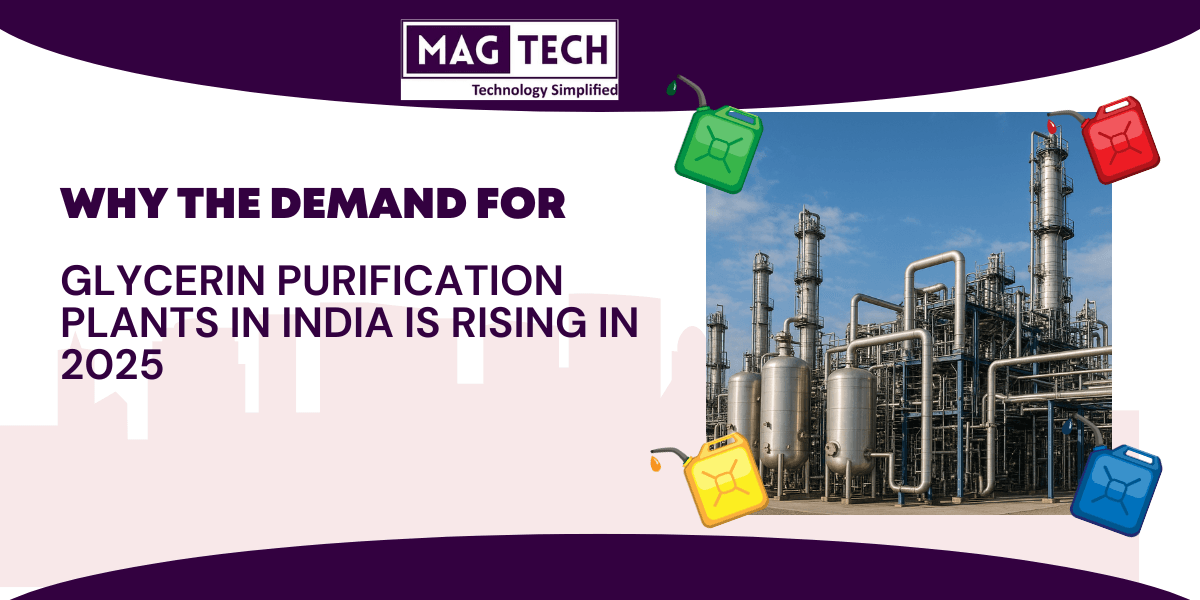Glycerin (glycerol) is a colorless, odorless, viscous liquid with exceptional hygroscopic properties. This trihydroxy sugar alcohol serves as an important ingredient across pharmaceutical, food, cosmetic, and industrial applications due to its humectant, solvent, and stabilizing capabilities. It exists in both natural and synthetic forms, each with distinct characteristics and applications. Natural glycerin and synthetic glycerin manufacturers do mention their product specifications due to the differences in their key applications.
Let’s find out what these two distinct types of glycerin are first.
Table of Contents
ToggleWhat is Natural Glycerin?
Natural glycerin, also known as bio-based glycerol, is a renewable organic compound derived from plant and animal sources through various processing methods. It emerges as a valuable byproduct during the production of soaps, fatty acids, and most significantly, biodiesel. This transparent, viscous liquid carries the chemical formula C₃H₈O₃ and possesses remarkable humectant and solvent properties in its pure form.

The Biodiesel Production Factor
The biodiesel production process has become the predominant source of natural glycerin in today’s market. During biodiesel manufacturing, vegetable oils or animal fats undergo transesterification—a chemical reaction where triglycerides react with methanol in the presence of a catalyst. This process yields methyl esters (biodiesel) and crude glycerol as a byproduct, typically at a ratio of approximately 10% glycerol to 90% biodiesel by volume.
The rapid expansion of the biodiesel industry over the past decade has significantly increased natural glycerin availability. As global efforts to reduce carbon emissions intensify, biodiesel production continues to rise, consequently flooding the market with natural glycerin. This abundance has transformed what was once considered a mere byproduct into a valuable commodity with expanding applications.
Beyond biodiesel, natural glycerin is derived from several other sources:
- Soap Manufacturing: Through saponification, fats and oils react with alkali, producing soap and natural glycerin.
- Fatty Acid Production: When fatty acids are hydrolyzed, glycerin emerges as a byproduct.
- Fermentation Processes: Some microorganisms can produce glycerin during fermentation.
- Oleochemical Industries: Various processes involving natural fats and oils yield glycerin.
The crude glycerin obtained initially contains impurities like water, methanol, soaps, and salts. It undergoes purification processes, including filtration, distillation, and ion exchange, to achieve the required purity levels for different applications. The refined product can reach purities exceeding 99.7%, making it suitable for sensitive applications in pharmaceuticals and food production.
Due to its renewable origin and environmentally friendly profile, natural glycerin has experienced substantial growth in market share. Many industries now prefer natural glycerin over synthetic alternatives, driven by consumer demand for sustainable, bio-based ingredients and products with lower environmental footprints. This shift aligns with the global movement toward greener chemistry and sustainable industrial practices.
What is Synthetic Glycerin?
Synthetic glycerin, unlike its natural counterpart, is manufactured through industrial chemical processes using petroleum-derived raw materials. This artificially produced glycerol shares the same chemical formula (C₃H₈O₃) and basic properties as natural glycerin but differs in its origin and production methods.

The primary methods for producing synthetic glycerin include the following:
Propylene-Based Production (Propylene Oxide Method): This is the most common industrial approach. The process begins with propylene, a byproduct of petroleum refining. Propylene undergoes chlorination to form allyl chloride, which is then converted to allyl alcohol.
The allyl alcohol is subsequently oxidized using hypochlorite to create dichlorohydrin. This intermediate compound is then treated with a strong base (typically sodium hydroxide) to yield epichlorohydrin. Finally, epichlorohydrin is hydrolyzed under high pressure and temperature to produce synthetic glycerin. This multi-step process typically yields glycerin with 95-98% purity, which can be further refined as needed.
Hydrogenolysis of Carbohydrates: This method involves converting carbohydrates like glucose, sucrose, or starch into glycerin through a catalytic hydrogenolysis reaction. The process uses hydrogen gas and metal catalysts (often nickel, copper, or ruthenium) under high pressure and temperature conditions.
The carbohydrate molecules are broken down and transformed into glycerin through a complex series of reactions. While this method can use renewable resources as starting materials, the energy-intensive process and required chemicals still classify the resulting glycerin as synthetic.
Acrolein Method: This process starts with acrolein, which is produced by oxidizing propylene. Acrolein undergoes hydration to form 3-hydroxypropionaldehyde, which is then hydrogenated to create synthetic glycerin. This method requires careful handling due to acrolein’s toxicity and reactivity.
Epichlorohydrin Hydrolysis: In this direct approach, epichlorohydrin (derived from propylene) is hydrolyzed with sodium hydroxide or sodium carbonate under controlled conditions to produce glycerin and sodium chloride.
The synthetic production of glycerin gained prominence during World War II when natural glycerin supplies became scarce. The petroleum industry developed these synthetic routes to meet the high demand for glycerin used in explosives manufacturing.
Key Differences of Natural and Synthetic Glycerin
Understanding these distinctions is essential for industries making informed decisions about which type to incorporate into their products and processes.
Source and Sustainability
Natural glycerin is derived primarily from renewable biological sources, most notably as a byproduct of biodiesel production using vegetable oils and animal fats.
This origin makes it inherently sustainable and part of the circular economy, where what would otherwise be waste becomes a valuable resource. By contrast, synthetic glycerin relies predominantly on petroleum-based feedstocks like propylene, tying it directly to non-renewable fossil fuel resources.
Carbon Footprint and Environmental Impact
The production of natural glycerin, particularly as a biodiesel byproduct, has a substantially lower carbon footprint compared to synthetic alternatives. When calculating the environmental impact of natural glycerin, much of the energy input and emissions are allocated to the primary biodiesel product, with glycerin essentially “inheriting” a minimal environmental burden.
Synthetic glycerin production, however, involves energy-intensive chemical processes specifically designed to create glycerin, resulting in significantly higher greenhouse gas emissions.
Purity and Refinement Requirements
Crude natural glycerin initially contains impurities such as methanol, soaps, water, and various salts, requiring purification to reach commercial grades. While this was once considered a disadvantage, advancements in purification technologies have significantly improved the efficiency of natural glycerin refinement.
Modern processes can now achieve purities exceeding 99.7%, matching or surpassing synthetic alternatives. Synthetic glycerin typically starts with fewer impurities but still requires energy-intensive distillation and refinement processes to reach pharmaceutical or food-grade standards.
Cost Considerations
With the explosive growth of biodiesel production globally, natural glycerin has become increasingly abundant and cost-effective. This market dynamic has reversed the historical price advantage that synthetic glycerin once held.
The cost-effectiveness of natural glycerin continues to improve as biodiesel production scales up and as refinement technologies advance, making it increasingly attractive to cost-conscious industries.
Traceability and Supply Chain Transparency
Natural glycerin offers superior traceability, as its biological sources can be identified and verified. This characteristic is particularly valuable for companies committed to transparent supply chains and those needing to verify the absence of certain allergens or contaminants.
The agricultural origins of natural glycerin also allow for certification programs verifying sustainable farming practices, adding another layer of value for environmentally and socially conscious brands.
Marketing and Consumer Perception
Products containing natural glycerin increasingly enjoy favorable consumer perception, aligning with the growing demand for “natural,” “bio-based,” and “sustainable” ingredients. This market advantage is particularly pronounced in the personal care, cosmetics, and food industries, where consumers actively seek products with naturally derived ingredients.
Regulatory Advantages
In regions implementing carbon taxes or cap-and-trade systems, manufacturers using natural glycerin may benefit from reduced regulatory costs due to lower associated carbon emissions.
Additionally, various green certification programs and eco-labels favor products containing bio-based ingredients like natural glycerin, providing competitive advantages in markets where such certifications influence purchasing decisions.
Performance and Versatility
While chemically identical, highly refined natural glycerin often demonstrates subtle performance advantages in certain applications, particularly in cosmetics and personal care products, where anecdotal evidence suggests improved sensory properties.
Applications of Natural and Synthetic Glycerin
Natural and synthetic glycerin serve as versatile ingredients across numerous industries, though their specific applications sometimes differ based on purity requirements, sustainability considerations, and cost factors.
Natural Glycerin Applications
Natural glycerin has become increasingly dominant in consumer-facing products and applications requiring sustainable credentials:
- Personal Care & Cosmetics: Moisturizers, soaps, toothpaste, shampoos, and skin-softening products
- Food & Beverage: Humectant in baked goods, stabilizer in ice cream, solvent for flavors and colors, moisture-retention agent
- Pharmaceuticals: Base for cough syrups, capsule formulations, suppositories, and as a preservative
- Textiles: Natural fiber treatment to prevent brittleness and increase flexibility
- Sustainable Packaging: Bio-based plastics and films, when combined with other renewable materials
- Organic/Natural Product Lines: Products marketed with clean/green positioning
- Agricultural Formulations: Eco-friendly pesticides and herbicides
- Animal Feed: Nutritional supplement in organic and premium feed formulations
Synthetic Glycerin Applications
Synthetic glycerin tends to dominate in industrial applications and processes requiring extreme purity or consistent specifications:
- Industrial Chemicals: Antifreeze formulations, brake fluids, de-icing solutions
- Explosives Manufacturing: Production of nitroglycerin and dynamite
- Electronics: Cooling systems, soldering fluxes
- Paper Industry: Softening agent, printing processes
- Tobacco Products: Humectant in cigarette production
- Textile Processing: Specific dyeing and finishing processes requiring precise chemical properties
- Lubricants: High-temperature industrial lubricants and metal-working fluids
- Paint & Coatings: Particularly in applications requiring extremely consistent performance specifications
While both types serve similar functions in many applications, the market continues to shift toward natural glycerin as improvements in purification technology narrow any performance gaps while sustainability advantages widen.
Why the Global Market Prefers Natural Glycerin?
Market dynamics have shifted decisively toward natural glycerin as sustainability becomes a critical business consideration. This preference reflects multiple compelling advantages:
- Renewable sourcing aligns with ESG commitments
- Growing availability from expanding biodiesel production
- Increasingly competitive pricing
- Consumer demand for bio-based ingredients
- Reduced carbon liability in regulatory environments
- Marketing differentiation opportunities
- Reduced fossil fuel dependence
How Biodiesel Manufacturers Can Monetize Glycerin Manufacturing?
Biodiesel producers can transform what was once considered a mere byproduct into a significant revenue stream through strategic glycerin refinement. Here, MAGTECH stands as an ideal partner by offering comprehensive glycerin manufacturing solutions backed by a decade of specialized experience.
Our expert team provides tailored purification equipment, process optimization, and technical support that maximizes glycerin quality while minimizing operational costs. With our proven track record and cutting-edge technologies, biodiesel manufacturers can confidently enter the lucrative natural glycerin market and enhance their overall profitability.


